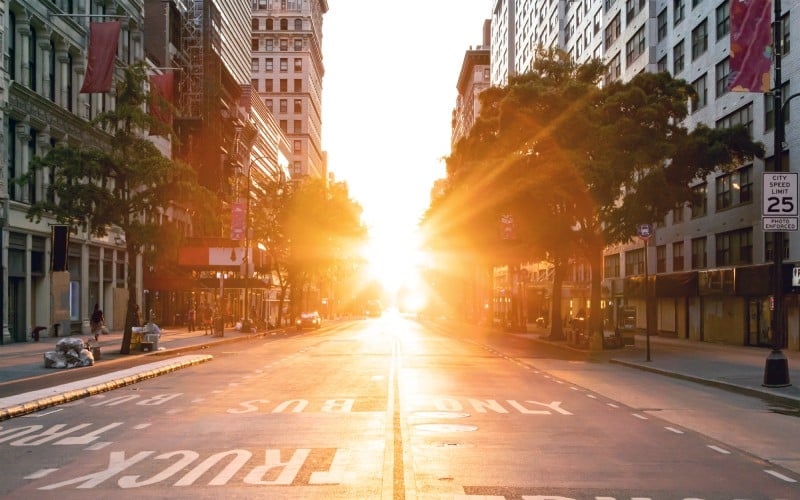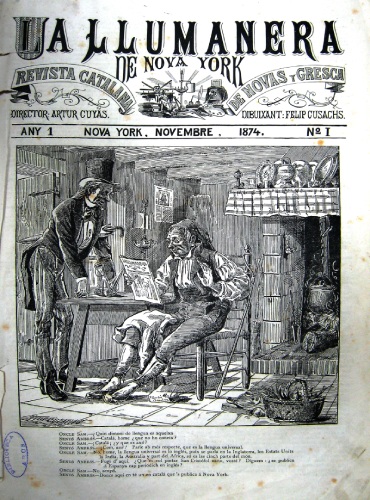
There is a place in New York City that hides a secret most people fail to notice. In fact, one must pay close attention to details in order to figure it out. If you do so, you might hear a word or two in Spanish, or spot the flag of a particular sports team. These are the almost invisible traces of Little Spain, a neighbourhood in New York that welcomed many Spaniards with open arms in the past.
Little Spain, or Pequeña España, was a Spanish-American neighbourhood that grew around the 14th Street in New York, between the Seventh and Eighth Avenues. The street crosses the island of Manhattan from end to end, and it only takes about 20 minutes to reach it by foot from the Empire State Building, or a walk of less than 50 minutes from Central Park. This corner became the heart of Spanish culture in the Big Apple, and we are about to find out why.

14th Street as seen from Union Square Park in New York City. | Shutterstock
Most historians place the birth of this neighbourhood in the second half of the 19th century. Ellis Island did not exist yet, and so many immigrants travelling from Spain to the US were able to settle in the city. The reason behind it was mostly a severe industrial crisis that affected the north of Spain. Hence, many people from Galicia and Asturias were forced to cross the Atlantic to make a living. The group was not too large either, but they settled in New York and established their own neighbourhood anyway.
At this early stage of Little Spain, the Catalan presence became notable too. They even founded La Llumanera de Nova York, a monthly publication in Catalan language that published content by several writers, artists and illustrators for years.

1874 issue of La Llumanera de Nova York. | Amadalvarez, Public domain, via Wikimedia Commons
However, the immigration to Little Spain reached its peak in the 20th century, mainly due to the Spanish Civil War and the beginning of Franco’s dictatorship. Many Republicans had to escape the retaliation of the Nationalist faction, and therefore most left-leaning artists and public figures fled the country at some point. This way, Little Spain became a new home for those who were forced to leave it all behind.

The church of Our Lady of Guadalupe in Manhattan. | Wikimedia
Little Spain was once full of Spanish shops and businesses owned by immigrants. One could even enjoy watching films in Spanish and attending masses in their language. In fact, the church of Our Lady of Guadalupe was the first parish in Manhattan with mass in Latin and Spanish. It was founded in 1902, and it can still be visited at 229 West 14th Street.
If there is an institution that has helped Spanish immigrants throughout the years, it must be the Spanish Benevolent Society, also known as La Nacional. It was first founded in 1868, and its main goal was to support Spaniards and Hispanic-American people arriving at New York City, promote solidarity in the community, spread Spanish culture and provide shelter and advice for immigrants, among other things. La Nacional is the oldest Spanish cultural Institution in the United States, and many renowned artists have lived there as residents. The main building can also be found on 14th Street.
Sadly, time and different social factors slowly erased Little Spain from the map. Even though the Spanish community remained strong in New York City, the neighbourhood began to fade in the 90s. Most Spanish shops and restaurants closed eventually, and the vibrant atmosphere that once flooded its buildings became pale. Like an ocean retrieving its long-lost harbour, the Big Apple submerged 14th Street under its waters for the last time. However, one can still find traces of all the nameless immigrants that settled there, countless stories drenching every corner of a place that has welcomed so many people in need of a new home.